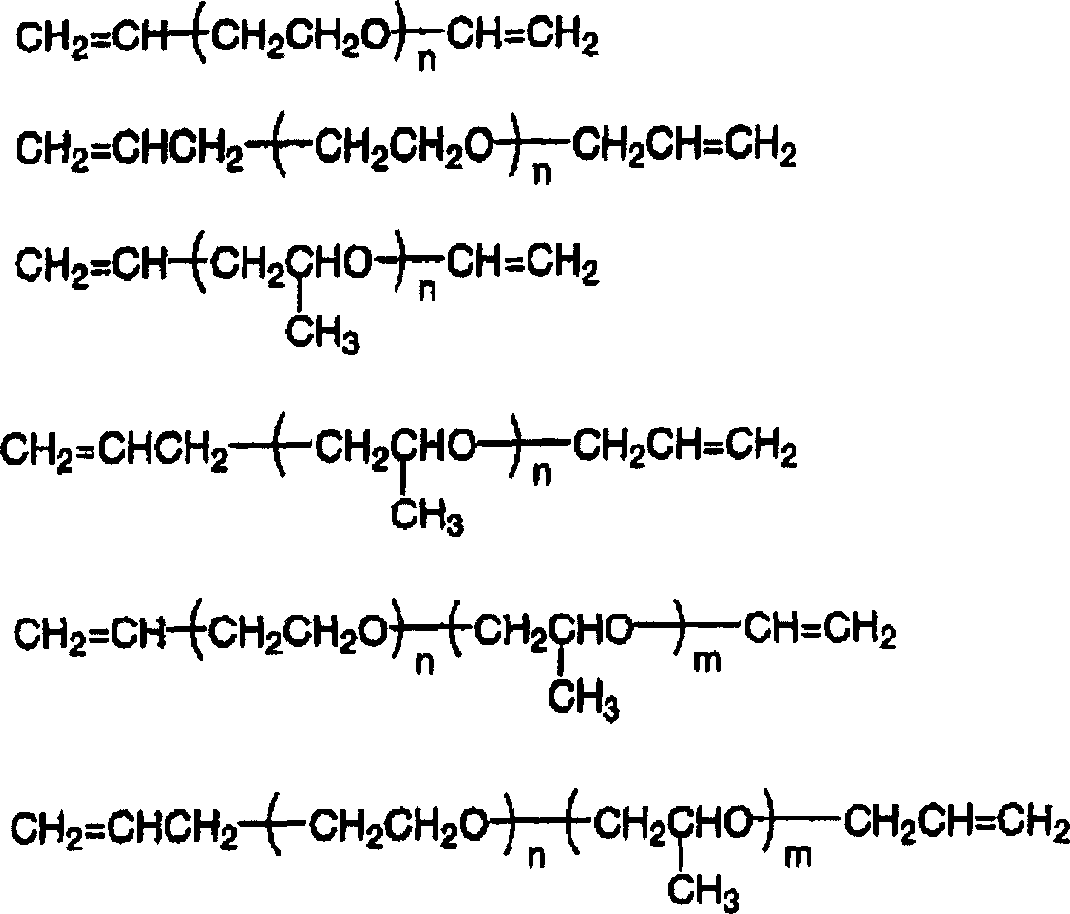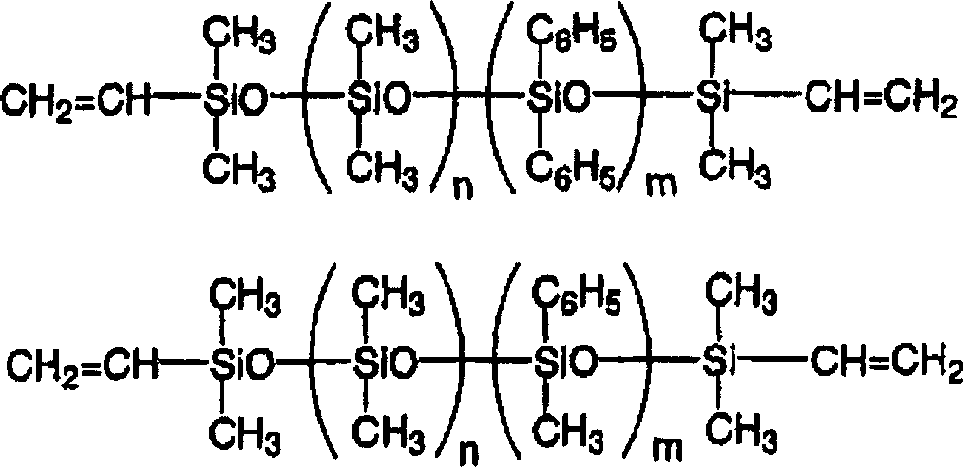Rubber composition for roller and ionic conductive rubber roller using the composition
A technology of rubber composition and ion conductivity, applied in coating, printing, printing devices, etc., can solve problems such as difficulty in using rubber rollers
- Summary
- Abstract
- Description
- Claims
- Application Information
AI Technical Summary
Problems solved by technology
Method used
Image
Examples
Embodiment 1-
[0091] 100 parts by weight of polyoxypropylene (number average molecular weight: about 7,200), 20 parts by weight of the following formula (3)
[0092]
[0093] phenyl group-containing polysiloxane (phenyl group content ratio: 40 mol %) whose both ends are blocked by vinyldimethylsiloxy groups, 10.5 parts by weight of the following formula (4)
[0094]
[0095] A phenyl-containing methylhydrogenated diene siloxane (molar ratio of SiH / alkenyl: 1.5 mol / mol) with a viscosity of about 20 mPa·s at 25° C., 0.6 parts by weight of 1- Ethynyl-1-cyclohexanol was mixed. Then, with respect to component (A), 100 ppm (by weight) of platinum vinylsiloxane complex as a platinum metal component was added to the mixture obtained above, and mixed well until uniform. Next, 2 parts by weight of LiN(CF 3 SO 2 ) 2 , 15 parts by weight of titanium oxide particles as a heat resistance enhancer, fully mixed, and prepared to obtain a liquid rubber composition 1.
Embodiment 2-
[0097] In Example 1, except that the mixing amount of the phenyl group-containing polysiloxane (phenyl group content ratio: 40 mol%) represented by the above (3) was changed to Other than 50 parts by weight, the liquid rubber composition 2 was prepared in the same manner.
Embodiment 3-
[0099] 100 parts by weight of polyoxypropylene (number average molecular weight: about 7,200), 20 parts by weight of the following formula (5)
[0100]
[0101] The viscosity at 25°C represented by 6.5 parts by weight of the phenyl-containing polysiloxane (phenyl group content ratio: 10 mol%) blocked by vinyldimethylsiloxy groups at both ends is about 20 mPa·s phenyl-containing methylhydrogenated diene polysiloxane (SiH / alkenyl molar ratio: 1.2 mol / mol), 0.6 parts by weight of 1-ethynyl-1-cyclohexyl as a reaction control agent Alcohol is mixed. Then, relative to component (A), 100 mm (by weight) of platinum vinyl siloxane complex as a platinum metal component was added to the mixture obtained above, and mixed thoroughly until uniform. Next, 0.6 parts by weight of LiN(CF 3 SO 2 ) 2 , 15 parts by weight of titanium oxide particles as a heat resistance enhancer, fully mixed, and prepared to obtain a liquid rubber composition 3.
PUM
| Property | Measurement | Unit |
|---|---|---|
| Viscosity | aaaaa | aaaaa |
Abstract
Description
Claims
Application Information
 Login to View More
Login to View More - R&D
- Intellectual Property
- Life Sciences
- Materials
- Tech Scout
- Unparalleled Data Quality
- Higher Quality Content
- 60% Fewer Hallucinations
Browse by: Latest US Patents, China's latest patents, Technical Efficacy Thesaurus, Application Domain, Technology Topic, Popular Technical Reports.
© 2025 PatSnap. All rights reserved.Legal|Privacy policy|Modern Slavery Act Transparency Statement|Sitemap|About US| Contact US: help@patsnap.com



